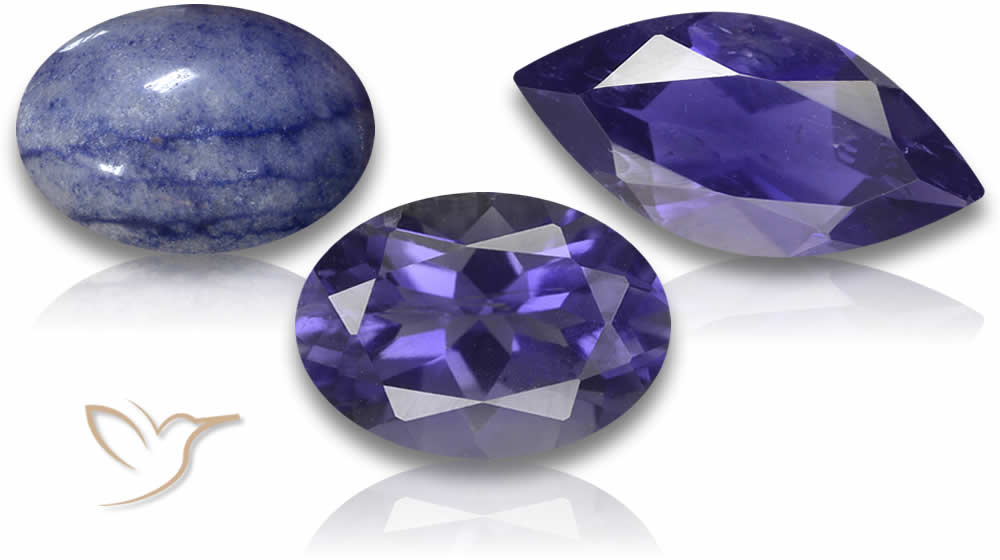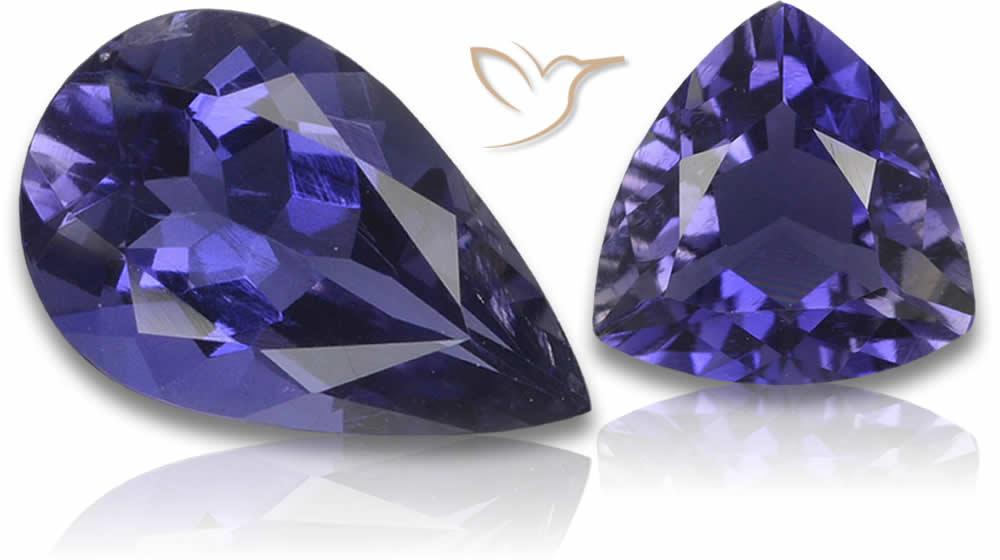Iolite Rarity Explored: Uncover Gemstone Secrets
Introduction to Iolite

Let's dive into the world of fine quality iolite – one of the most elusive gemstones out there. High-grade iolite is indeed rare and highly sought after because of its distinctive features and striking appearance. If you want to delve deeper, explore detailed iolite gemstone information. In this piece, we'll dig into what makes iolite so uncommon by looking at different sides of this fascinating stone. From its impressive colors to its eye-catching optical effects, we're heading on a trip through the realm of iolite. Stick with us as we reveal what sets iolite apart as truly unique.
Key Takeaways:
- Iolite is a rare gemstone
- Iolite has a unique range of colors, from deep blue-violet to pale blue
- Iolite exhibits pleochroism, resulting in mesmerizing optical effects
- Iolite can be found in specific mining locations and is often compared to tanzanite and amethyst
- The price and value of iolite can be influenced by several factors
The Stunning Colors of Iolite
One thing that makes iolite so intriguing is the variety of gorgeous colors it can show. Typically, you'll see iolite in a rich blue-violet tone that's similar to tanzanite or sapphire. But it also appears in softer blue shades that are light and vibrant.
These color differences in iolite come from elements like iron and magnesium, the way the crystals are oriented, and even the light around it. Plus, iolite is pleochroic, so it seems to shift colors depending on the viewing angle. This gives iolite a lively and ever-changing look that's really captivating.
Captivating Pleochroic Properties of Iolite
Iolite isn't just pretty; it also has impressive pleochroic traits that boost its appeal. Pleochroism means a gem can show various colors from different viewpoints.
When light hits an iolite crystal, it splits into two paths moving at different paces. This causes the stone to display varying colors based on the angle. For example, it might look deep blue-violet from one side and lighter blue from another.
What really stands out about iolite is its ability to show two colors simultaneously sometimes, called dichroism. Say, it could seem blue from one direction and yellowish-brown from another. These special visual effects make iolite a favorite for jewelry makers, particularly those wanting something with a surprise element.
Iolite Mining Locations and Comparisons to Tanzanite and Amethyst
Regarding iolite mining spots, this gem turns up in a few places globally. Key sources include India, Madagascar, Sri Lanka, Tanzania, and Zimbabwe. That said, iolite mining areas aren't as famous as those for tanzanite or amethyst.
Tanzanite is exclusive to Tanzania, mined in the Merelani Hills of the Manyara Region. Its scarcity and single-source location make tanzanite one of the top desired gems. Amethyst, a quartz variety, is far more common than iolite and pops up in countries like Brazil, Uruguay, and Zambia.
| Iolite | Tanzanite | Amethyst | |
|---|---|---|---|
| Primary mining locations | India, Madagascar, Sri Lanka, Tanzania, Zimbabwe | Tanzania | Brazil, Uruguay, Zambia |
| Availability | Rare | Very Rare | Widely available |
| Appearance | Blue-violet | Blue-purple | Purple |
| Price | Lower than tanzanite, higher than amethyst | High | Low |
Though iolite's rarity matches tanzanite's in some ways, it's less recognized and cheaper. Its unique blue-violet shade distinguishes it from amethyst's purple tone.
All in all, iolite's scarcity, distinct color palette, and pleochroic features make it a top pick for collectors and jewelry fans.

Iolite Price and Value in the Market
Having covered iolite's rarity, colors, pleochroic traits, and mining sites, let's now focus on its pricing and worth.
Iolite's market value fluctuates based on aspects like size, cut, clarity, and color. Usually, bigger and better-cut iolite stones fetch higher prices. It's uncommon to spot iolite over 1 carat with excellent clarity. Also, stones boasting a deep, vibrant blue-violet are treasured and thus more costly.
Even with its rarity, iolite stays reasonably priced next to similar-quality gems. This positions it as a great choice for anyone seeking a standout jewelry piece without spending a fortune.
In summary, iolite is a remarkably beautiful and scarce gem with a rich history. Its special colors, pleochroic effects, and sourcing spots make it an engaging addition to any collection. Though it doesn't match the cost of some renowned gems, iolite's charm and uniqueness make it a stone worth appreciating. For further insights, visit our complete iolite gemstone guide.
Frequently Asked Questions
Is iolite rare?
Yes, iolite is considered rare in the world of gemstones. High quality availability is limited compared to other gemstones, making it highly sought after by collectors and jewelry enthusiasts.
What colors can iolite be?
Iolite can exhibit a range of colors, but the most common and desirable hue is a deep blue-violet. It can also appear in lighter shades of blue, from pale to intense, and sometimes with a grayish tinge.
What are the pleochroic properties of iolite?
Iolite displays strong pleochroism, meaning it exhibits different colors when viewed from different angles. It can appear blue from one angle, violet from another angle, and even pale yellow or gray from certain directions.
Where is iolite mined? How does it compare to tanzanite and amethyst?
Iolite is primarily mined in countries such as India, Sri Lanka, Madagascar, and Brazil. In terms of availability, iolite is rarer than tanzanite and amethyst. While both tanzanite and amethyst can be found in larger quantities, iolite's unique color and pleochroic properties set it apart.
How is iolite priced and valued in the market?
The price of iolite is influenced by factors such as color intensity, clarity, cut, size, and overall quality. Gemstone enthusiasts value iolite for its rarity, beauty, and distinctive optical effects. Prices vary depending on these factors and market conditions.

